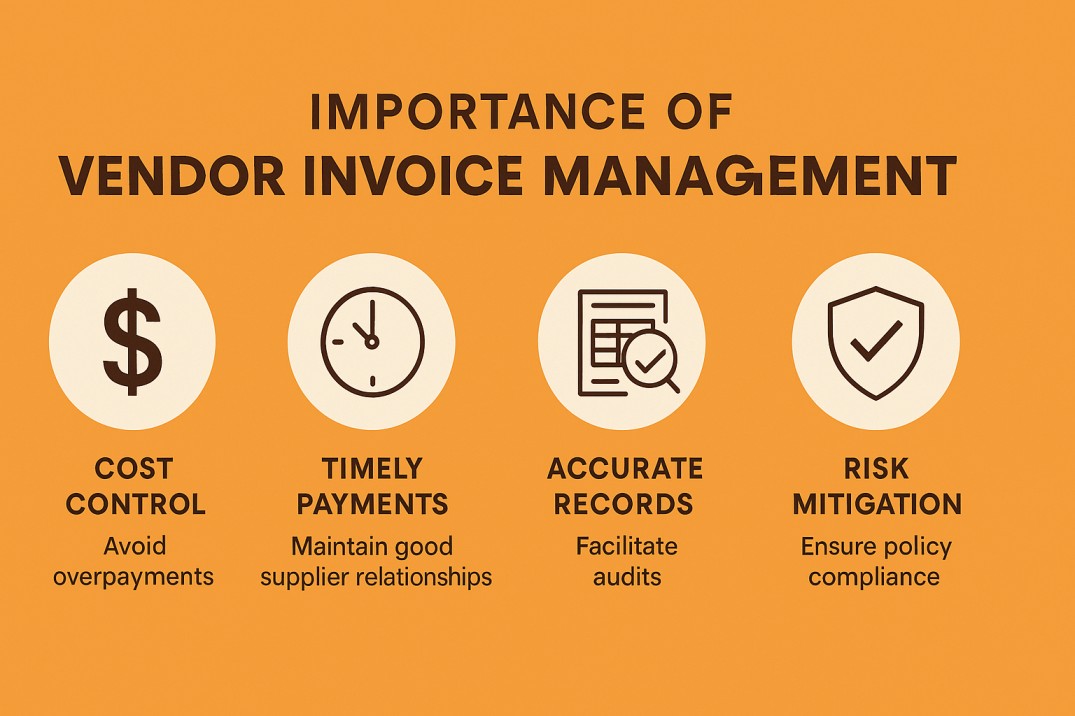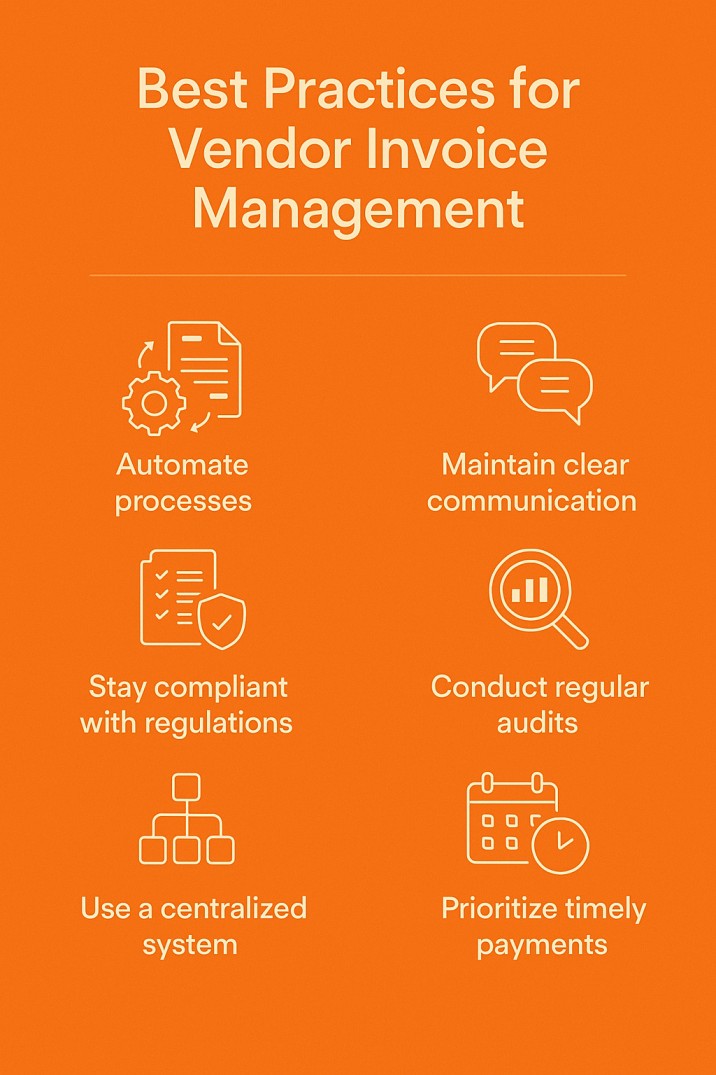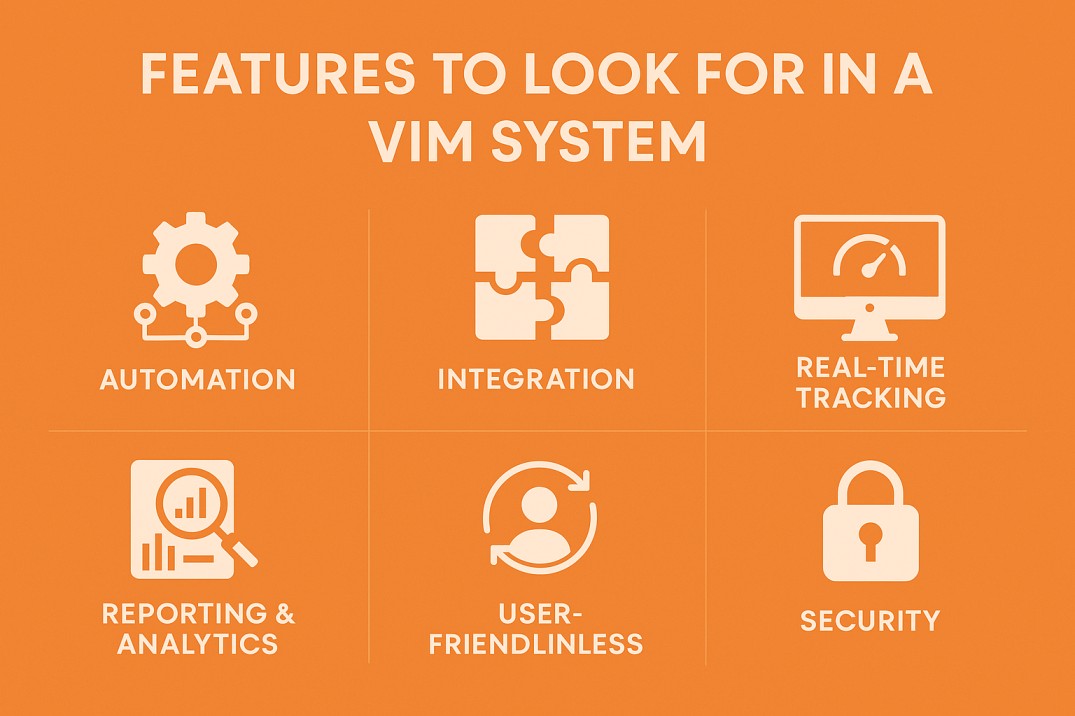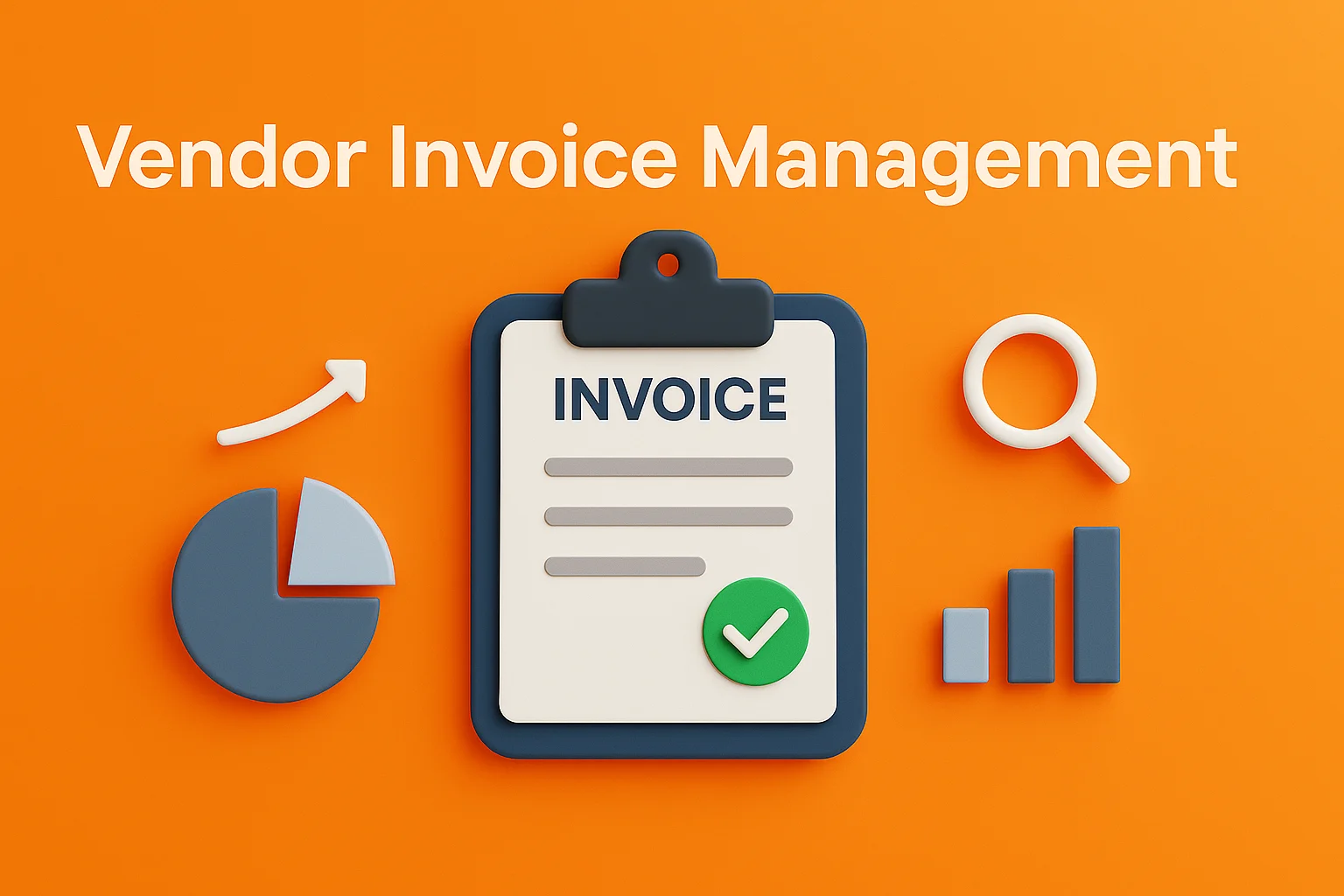Managing the invoice efficiently is an important part of running a successful business, but it is one of the most challenging. Vendor invoice management (VIM), is a game-changer for organizations who are looking to streamline their invoice processing. Vim is a solution that automatically and simplifies the approval of receipt, routing and invoice, reduces the need for manual effort and reduces expensive errors.
By implementing the VIM, companies can improve operational efficiency, ensure compliance with financial rules, and gain better control over the process payable to their accounts. Not only does it save time, but it also strengthens the vendor relationship and provides valuable insight into the cash flow. Whether you are part of a large enterprise or a growing business, understanding and profit can change the way you handle your finances. Keep reading to find out how better vendor payment processes can revolutionize your business operations.
What Is Vendor Invoice Management (VIM)?
The vendor invoice management (VIM) is a streamlined process or system designed to handle the entire life cycle of the supplier invoice from receipt to payment. This system automates and simplifies functions such as capturing, verifying, approving workflows, and processing payments, reducing manual intervention and errors. The VIM is often integrated with the Enterprise Resource Planning (ERP) system, enabling organizations to maintain better control over the procedures of their accounts. By taking advantage of VIM, businesses can improve efficiency, follow tax invoice regulations, and strengthen relationships through timely payment, and gain more visibility in their financial operations. This is especially beneficial for organizations dealing with high versions of invoices, as it reduces processing time and operating costs.

Why Is Vendor Invoice Management Important?
Vendor Invoice Management (VIM) is crucial for businesses for several reasons:
- Streamlined procedures: VIM automates invoice handling just like electronic invoicing systems automate payments and tracking. It saves time and reduces errors.
- Cost Savings: By avoiding late payment penalty and taking advantage of initial payment exemption, businesses can save money. Automation also reduces administrative costs.
- Better vendors Relationship: Timely and accurate payments promote trust and strengthen the relationship with the vendors, ensure smooth cooperation.
- Promoted accuracy: Automation reduces human errors, ensuring that the invoices are properly processed and discrepancies are quickly approved.
- Compliance and audit readiness: The VIM system maintains a clear record of all transactions, making it easier to follow the rules and prepare for the audit.
- Better cash flow management: With real-time visibility into invoice statuses, businesses can manage their cash flow more effectively and plan the budget accurately.

Components of Vendor Invoice Management
The vendor invoice management (VIM) is a process or system used to manage and make the handling of the supplier invoices within an organization. It is often part of an enterprise resource planning (ERP) system, such as SAP. The components of vendor invoice management usually include the following:
Invoice Capture
- Scanning and digitization: Paper invoice is scanned and converted into digital formats.
- Optical Character Accreditation (OCR): Extracts data from scanned invoices for automated processing.
- Electronic invoices: Direct integration of e-tendons in the system.
Invoice Verification
- Data verification: This ensures that invoice data matches the purchase order (PO), goods receipts, and other relevant documents.
- Duplicate check: Recognizes invoices to prevent over -payment and duplicate the flag.
- Compliance Investigation: It verifies that invoices meet legal and organizational compliance requirements.
Workflow Automation
- Approval Workflow: Automates the passage of the invoices to the personnel suitable for review and approval.
- Exception handling: Manage discrepancies or errors in the invoice, such as mismatched amount or missing information.
- Notifications and Alerts: Sends a reminder to pending approval or focus on issues.
Integration with ERP system
- Purchase order matching: For three-way match, the invoice is matched with POS and freight receipts.
- Payment Processing: Appears with the payable (AP) system to schedule and execute the payment.
- vendor master data: Ensure accurate and updated vendor information for spontaneous processing.
Reporting and analytics
- Invoice Tracking: Provides real -time visibility in the invoice condition.
- Performance Matrix: Invoice processing tracks major performance indicators such as time, per invoice cost, and payment accuracy.
- Audit Trails: Maintains a detailed history of invoice processing for compliance and auditing purposes.
Exception management
- Dispute solution: The invoice related to delay in invoices disclosures or payment handles disputes.
- Error correction: Manual intervention allows to correct the flagged errors during verification.
Compliance and Security
- Regulatory compliance: Taxes ensure adherence to laws, financial rules and industry standards.
- Data Security: Protects sensitive invoices and financial data through encryption and access control.
Vendor Communication
- Self-service portal: allows vendors to check payment status easily, similar to mobile payment apps that offer instant tracking.
- Automatic Information: Informs the vendors about the invoice status and payment program.
These components work together to improve the overall vendor relationship by improving efficiency, reducing errors and ensuring timely and accurate invoice processing.
Common Challenges in Vendor Invoice Management
Here are some common challenges businesses that faced in vendor invoice management:
- Manual data entry: Relying on manual processes can delay errors, disabilities and processing invoice.
- Invoice matching issues: Difficulty in matching the vendor invoice with procurement orders and receipts may lead to delays and discrepancies and approval.
- Late Payment: Processing invoice may be delayed late payment, vendor can damage the relationship and punishment can be provoked.
- Fraud and duplicate invoices: Without proper investigation, businesses may suffer — it’s important to integrate security practices in invoicing.
- Lack of visibility: The invoice can make it difficult to track the status of limited visibility in the life cycle and identify bottlenecks.
- Compliance and audit challenges: Ensuring compliance with tax rules and maintaining appropriate documents for audit can be complicated.
- High processing costs: Disable procedures and lack of automation may increase the cost of management of invoices.
- vendor dispute: misunderstandings or errors in the invoice can lead to disputes, vendors can stress relationships.
- Scalability issues: As business grows, managing a high amount of invoices becomes rapidly challenging.
- Integration problems: Difficulty in integrating invoice management systems with existing ERP or accounting software may obstruct efficiency.

Best Practices for Effective Vendor Invoice Management
The management of the invoice saves time efficiently, reduces errors, and improves cash flow. Apply these best practices to streamline your process:
- Leverage automation: Manual processing is error-prone and time taking time. Use automation tools for invoice data capture, approval workflow and accounting integration. Platforms such as SAP Concur and Quickbooks increase accuracy, reduce late payment, and improve transparency.
- Keep clear vendor communication: Define payment conditions, determine expectations for discrepancies, and provide invoice status updates. A central point of contact prevents confusion and ensures smooth processing.
- Ensure compliance with rules: Stay updated on tax laws, standardize document requirements, and record the audit vendor to avoid punishment and build trusts.
- Conduct regular audit: Identify disabilities by reviewing payment trends, vendors performance and internal workflows. Quarterly audits help quickly catch issues.
- Use a centralized system: Organize invoices with features such as reporting dashboard, document storage and user permissions for better cooperation and access.
- Prioritize timely payments: Strengthen vendor relationships by taking advantage of early payment discounts, setting the reminder, and assessing the cash flow to get the money available.
How Automation Enhances Vendor Invoice Management?
The automation vendor significantly improves the invoice management speed, accuracy and efficiency. Here is how it helps businesses:
- Improvement in accuracy: Automation reduces manual errors in data entry, which can lead to delays. Tools such as SAP Concur and Quickbooks online use optical character recognition (OCR) to automatically capture and input invoice details.
- Rapid processing: Automatures repetitive stages such as approval and discrepancy resolution, cuts significantly in processing time. Solutions such as the coupa streamline approval workflows, ensure that the invoice proceeds quickly through the invoice process.
- Cost savings: Tools like programmatic invoicing systems reduce overheads by automating repetitive tasks. Tools such as AvidXchange handle everything from invoice captures to payment, which helps businesses to save on operational costs.
- Better compliance: Increasing transparency, maintains clear audit trails for each stage of the invoice process. ZOHOs ensure software by doing software by ensuring following rules and financial standards.
- Extended vendor relationship: Ensures timely and accurate payments on time, builds confidence with vendors. Automatic system vendors send updates and reminders to keep informed about the payment status.
By integrating advanced equipment and technologies in its processes, business invoices can focus on time saving and development. The automation transforms the invoice into a spontaneous and reliable operation.

Features to Look for in a VIM System
The management of the vendor invoice may feel like a juggling act. A strong supplier invoice management system can change this tedious process, save time and reduce errors. But what should you see in such a system? Here are the necessary facilities:
Automation
Automating processes such as data entry and invoice matching reduces manual errors and speeds up things. For example, automated matching can be compared to the invoice immediately to buy order, give flags to discrepancies and simplify approval.
Integration
Your system should basically connect with devices you are already using, such as accounting software or ERP platform. This ensures smooth data flow and eliminates repetition.
Real-Time Tracking
Stay updated on invoice statuses at every stage, from submission to payment. This transparency helps manage cash flow and resolve issues quickly.
Reporting and Analytics
Detailed reporting vendors provide insights into performance and payment trends, enabling smart financial decisions and better forecasts.
User-Friendship
A simple, intuitive interface ensures quick adoption by your team, reducing learning state and making daily tasks easier.
Scalability
Choose a solution that grows with your business. Whether you expand your vendor base or expand the amount of invoice, the system should be easily adapted.
Security
Protect financial data, especially when handling vendor invoice disputes and sensitive payment records.
The correct system will streamline your workflows, save resources and increase financial management. Start searching for advanced supplier invoice management solutions to set your business for success!
Vendor Invoice Management Step-by-Step Process
Effective vendor invoice management ensures smooth operation, timely payment and a healthy vendor relationship. Below is a clear, step-step guide that manage the supplier invoice efficiently:
Invoice Receipt
Accept the invoice through installed channels (email, vendor portal, or post). Check for proper format, perfection and compliance with the company’s requirements.
Invoice Verification
Cross-check invoice details such as the vendor name, invoice number, PO number, and date. Confirm that the zodiac, tax and other calculations are accurate. Copy the invoice against procurement order (PO), distribution notes, or contract.
Data Entry
Enter all the relevant invoices in the accounting or invoice management system. Assign the appropriate cost center and GL (general account book) code. Ensure consistency in naming conventions and data formatting.
Approval Process
Route the invoice for review and approval for the appropriate authority. Inform the approval immediately and follow the pending approval to avoid delay.
Exception Handling
Address mismatch or errors (eg, wrong volume, missing documents). If necessary, communicate with vendors to resolve disputes. Log and track resolution status.
Payment Authority
Verify all approval and ensure that sufficient funds are available for payment. Confirm compliance with agreed payment terms and policies (eg, initial payment discounts, net -30 terms).
Execution of payment
Process payment through preferred methods (bank transfer, check, etc.). Record payment transactions in the financial system to update the account book.
Record Keeping
Archive invoice, approval and confirmation of payment for audit purposes. Maintain organized digital or physical storage for easy recovery.
Reporting and analysis: Generate regular reports to track invoice status, payment performance and vendor compliance.
Choosing the Right VIM
Skilled vendor is important for invoice management businesses, which aims to streamline the payable procedures, reduce errors and maintain strong vendor relationships. Choosing the right software can lead to a significant difference. Here are important factors to consider:
Core Features
Watch software equipped with features like automated invoice processing, OCR (optical character recognition), duplicate detection and real-time tracking. This functionality helps reduce manual efforts, reduce errors and ensure rapid processing. Customizable workflows and approval can further increase the hierarchy efficiency.
Scalability
Choose a solution that grows with your business. If you plan to expand operations or place more vendors on the ship, make sure that the software can handle the invoice volume without compromising or the need for expensive upgrades.
Integration capabilities: A good invoice management solution should be basically integrated with its existing enterprise systems, such as ERP, accounting software and purchase platforms. Integration ensures data stability, reduces silos, and saves time on manual data transfer.
User-Friendly
Adopt software with an intuitive interface that is easy to learn and use for employees. Complex systems with steep learning curves often give rise to disabilities and delays. A demo or test period can help you evaluate ease of use before committing to you.
Cost-Effectiveness
Evaluate software costs including subscription fees, implementation fees and any hidden expenses. While strength is important, prioritize the price at the price. Slightly higher upfront investment can cause long -term savings through increased productivity and low errors.
Customer Aid
Reliable customer aid is necessary to quickly resolve issues and ensure smooth operation. Look for vendors offering many support channels such as chat, email and phone with a strong knowledge base or training resources.

Role of AI and Machine Learning in VIM
The management of the vendor invoice is important for businesses, but often involves repetitive tasks, manual errors and disabilities. Artificial Intelligence (AI) and machine learning (ML) are bringing revolution in vendor invoice management by automating processes, reducing errors, cuts and improving overall efficiency. Here is how these technologies are changing the landscape.
Automation of procedures
AI organizes the invoice management by automatic time taking tasks taking time. Invoice data extraction, matching invoices to purchase orders, and payment approval, once depending on manual input, are now automated. Optical character recognition (OCR) removes information from the invoice with speed and accuracy operated by AI, eliminating the need for human intervention, ensuring data stability.
Reduction in Error
Manual invoice processing suffers from errors such as duplicate payment, wrong data entry and missed deadline. AI and ML reduce human error by validating the data extracted against predetermined criteria, such as vendor details and purchases orders. Machine Learning algorithms continuously improve their accuracy by increasing credibility over time, learning from previous errors.
Cost Savings
By automating procedures and reducing errors, businesses significantly reduced operating costs. AI helps eliminate late payment punishment by ensuring accurate and timely processing. It also reduces the need for a large account (AP) workforce payable, allowing companies to allocate resources more strategically.
Better Efficiency and Scalability
AI-operated systems easily handle large versions of the invoice, ensure rapid processing time and real-time tracking. Businesses no longer face hurdles during the period of peak transactions, as they can operate without compromising the system performance. It also leads to quick vendor payment, promotes better relationships.
Extended Fraud Detection and Compliance
Excel in identifying the fraud invoice by analyzing patterns and discrepancies in AI transactions data. Additionally, it ensures compliance with rules by rapidly changing by automatically updating payment and documentation processes according to regional requirements.
Data-Operated Insights to Decide
AI tools provide practical analysis, which enable businesses to monitor the invoices, vendors performance and pay payment cycles. These insights support strategic decision making, which helps organizations to adapt to cash flow management and vendor dialogue.
Future of Vendor Invoice Management
The future of vendor Invoice Management (VIM) is defined by progression, artificial intelligence (AI), ERP integration and cloud-based platforms. Automation reduces manual efforts by streamlining tasks such as invoice invoices and approval, while AI offers to take smart decisions through future insight and error. Deep ERP integration ensures real -time data synchronization, optimizes the workflows and improves audit readiness. Meanwhile, cloud-based systems — much like electronic payment gateways — ensure scalability and easy accessibility. These technologies collectively increase efficiency, low operational expenses, and strengthen compliance, making the modern VIM system competitive and indispensable to businesses aimed at being ready for the future.
How Small and Large Businesses Benefit from VIM?
The vendor invoice management (VIM) provides different benefits for both small and large businesses, which meets their unique needs during driving efficiency. Small businesses obtain from low manual efforts, well -organized approval workflows, and at least errors from cost savings, allowing them to allocate resources more strategically. For large enterprises, VIM scalability and strong automation capabilities easily handle high versions of the invoice, timely payment and better vendors ensure relationships. Additionally, advanced features such as analytics and regulatory compliance equipment support both small and large organizations, providing insight into cash flows, improving decision making, and ensuring local and international rules. Whether it is scaling operations or adaptation of processes, VIM strengthens all sizes with agility and control over accounts payable.
Conclusion
Vendor Invoice Management (VIM) is a transformational solution that brings immense value to all sizes, to streamline and automate the invoice processing lifestyle. Operational efficiency increases manual errors and by cutting costs, empowers VIM organizations to focus on their main objectives while maintaining financial accuracy. It promotes strong vendor relationships through timely payment, more transparency and active communication, which are important for smooth cooperation. Additionally, the scale of ensuring compliance with VIM, providing real -time analytics, and business development makes it an important tool in modern financial operations. Applying VIM is not only an investment in the processes payable by better accounts, but also in the long -term success and agility of your organization.
Create Invoices Instantly – Free & Easy!
Generate professional invoices in seconds with our Free Online Invoice Generator.
👉 Try the Invoice Generator Now

Leave a Reply